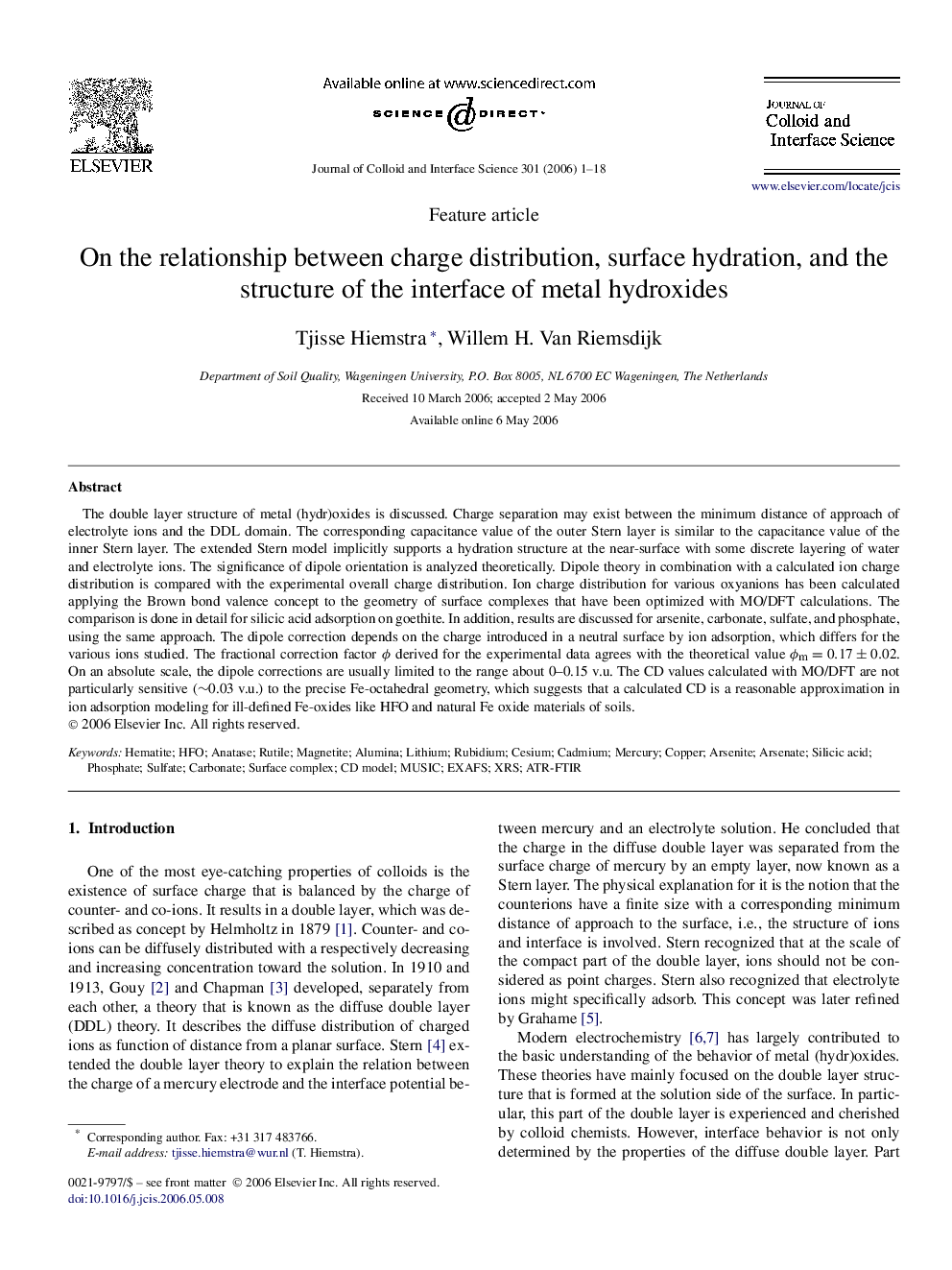| Article ID | Journal | Published Year | Pages | File Type |
|---|---|---|---|---|
| 612704 | Journal of Colloid and Interface Science | 2006 | 18 Pages |
The double layer structure of metal (hydr)oxides is discussed. Charge separation may exist between the minimum distance of approach of electrolyte ions and the DDL domain. The corresponding capacitance value of the outer Stern layer is similar to the capacitance value of the inner Stern layer. The extended Stern model implicitly supports a hydration structure at the near-surface with some discrete layering of water and electrolyte ions. The significance of dipole orientation is analyzed theoretically. Dipole theory in combination with a calculated ion charge distribution is compared with the experimental overall charge distribution. Ion charge distribution for various oxyanions has been calculated applying the Brown bond valence concept to the geometry of surface complexes that have been optimized with MO/DFT calculations. The comparison is done in detail for silicic acid adsorption on goethite. In addition, results are discussed for arsenite, carbonate, sulfate, and phosphate, using the same approach. The dipole correction depends on the charge introduced in a neutral surface by ion adsorption, which differs for the various ions studied. The fractional correction factor ϕ derived for the experimental data agrees with the theoretical value ϕm=0.17±0.02ϕm=0.17±0.02. On an absolute scale, the dipole corrections are usually limited to the range about 0–0.15 v.u. The CD values calculated with MO/DFT are not particularly sensitive (∼0.03 v.u.) to the precise Fe-octahedral geometry, which suggests that a calculated CD is a reasonable approximation in ion adsorption modeling for ill-defined Fe-oxides like HFO and natural Fe oxide materials of soils.
Graphical abstractIntroduction of ion charge results in structuring of near-surface water, which induces a dipole feedback that in combination with a quantum-chemically calculated ion charge distribution determines the overall CD coefficients.Figure optionsDownload full-size imageDownload as PowerPoint slide
